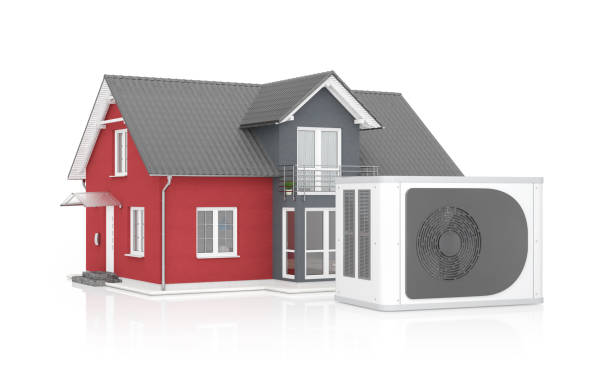For many homeowners, heat pumps are starting to look less like futuristic novelties and more like common sense. With energy bills climbing and traditional boilers under increasing regulatory scrutiny, the shift toward cleaner, more efficient heating has moved from optional to almost inevitable. But within the world of heat pumps, there’s nuance—and one type in particular has been drawing attention: the air-to-water heat pump.
If you’re weighing up whether this system could be the right fit for your property, the answer won’t come in a one-size-fits-all box. It’ll depend on your home’s infrastructure, your heating expectations, and frankly, how patient you are with slightly more complex installations.
What Makes Air-To-Water Heat Pumps Different?
Unlike air-to-air systems that pump warm air directly into living spaces, air-to-water heat pumps work by heating water that then circulates through your radiators or underfloor systems. This puts them in closer alignment with traditional boiler setups, which is one reason they’re often pitched as a “greener upgrade” rather than a total overhaul.
The process itself is elegantly simple. Outdoor units extract latent heat from the air—even in colder weather—and compress it to a temperature suitable for heating water. That water is then pushed through your central heating system, providing a steady, ambient warmth that feels less aggressive than forced air but more responsive than older boiler systems.
And this is where choosing the right hardware matters. Not all models are created equal, and the selection of eco-smart hot water systems available today caters to a wide range of home sizes and heating needs. Whether you’re retrofitting an older semi-detached or specifying systems for a new build, the flexibility of these units makes them a contender worth shortlisting—especially if you’re planning to ditch gas altogether.
Your Home’s Suitability Matters More Than You Think
It’s tempting to jump into eco-tech solutions just because they’re trending or incentivised. But heat pumps are a bit fussy. They thrive in well-insulated, airtight homes—ones that don’t let all the hard-earned warmth escape through single-glazed windows and unsealed lofts.
Why? Because heat pumps operate at lower water temperatures than traditional gas boilers. Instead of heating water to 70 or 80 degrees Celsius, they typically aim for 35 to 55. That means the entire system needs to be more efficient at retaining and distributing heat. Radiators may need upgrading, pipework might need resizing, and some households may find that underfloor heating is a better match altogether.
This doesn’t mean old houses are off the table. It just means some upgrades may be necessary to make the whole system worthwhile. Think of it as tuning the instrument before the orchestra plays. Without that preparation, you may end up underwhelmed—and out of pocket.
Running Costs Versus Installation Costs
The long-term savings of air-to-water heat pumps are often highlighted by manufacturers, and for good reason. They’re far more efficient than gas boilers in terms of energy used versus heat delivered. However, installation isn’t exactly cheap. Depending on your home’s setup, location, and energy provider, the upfront cost can feel steep—even after accounting for government incentives or grants.
But this is one of those rare cases where playing the long game usually pays off. Monthly energy bills tend to shrink significantly, and maintenance costs are relatively low. There’s no combustion process, fewer moving parts than traditional systems, and no risk of carbon monoxide leaks or flue problems.
That said, if your current boiler still has a few good years left and you’re not planning major renovations, it might be worth waiting until the timing—and your budget—makes more sense.
Noise, Space, And Other Practicalities
Something not often mentioned in the sales brochures: these systems take up space. The outdoor unit isn’t massive, but it’s not invisible either. It will need to be placed with enough airflow around it to operate efficiently—so no squeezing it between two fences or under a decking platform.
Noise levels are generally low but not negligible. On colder mornings when the system is working harder, the fan may produce a soft hum. Not a problem if it’s near a utility area, but worth considering if it’s adjacent to a bedroom window or garden seating area.
Inside, you’ll need room for a hot water cylinder if you don’t already have one. For homes that have embraced combi boilers and freed up that cupboard under the stairs, this might feel like a step backwards—but it’s a necessary part of the setup.
Final Thoughts: Long-Term Thinking Pays Off
Air-to-water heat pumps aren’t a plug-and-play solution. They ask more of your home and more of your wallet—at least initially. But for the right setup, they offer a cleaner, quieter, and more sustainable path forward for home heating.
So is an air-to-water system right for your home? If you’re prepared to invest in the insulation and infrastructure to support it, and you’re looking for long-term savings over instant convenience, the answer is probably yes. But like all smart investments, it pays to do your homework—and to plan beyond just this winter.

